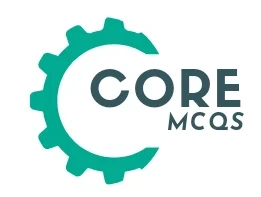12th class (Fsc) Biology unit 2 MCQs
51. The fusion of four posterior vertebrae present in the pelvic region form:
a. Coccyx
b. Sacrum
c. Chest cage
d. Lumbar
52. A bone is not a part of pelvic girdle:
a. Humerus
b. Ilium
c. Pubis
d. Ischium
53. In thoracic region, number of vertebrae is:
a. 05
b. 12
c. 04
d. 15
54. Which one is not a bone of axial skeleton:
a. Pelvic
b. Ribs
c. Cranium
d. Sternum
55. Which one of the following is not an unpaired bone:
a. Sphenoid
b. Mandible
c. Nasal
d. Vomer
56. The number of pelvic vertebrae in vertebral coloumn of man is:
a. 9
b. 5
c. 12
d. 7
57. The clavicle connects scapula with:
a. Femur
b. Skull
c. Tibia
d. Sternum
58. All of the following bones are associated with coxal bones, except:
a. Pubis
b. Ilium
c. Clavicle
d. Ischium
59. The number of lumbar vertebrae are:
a. 12
b. 5
c. 33
d. 7
60. In the mammalian skeleton there is a distinct synovial joint between the:
a. Sacrum of ilium
b. Bones of the cranium
c. Sternum and floating ribs
d. Humerus and ulna
61. The synovial joints is surrounded by matous cells are usually impregnated with:
a. Annulus
b. Ligaments
c. Fibrous capsule
d. Nucleus pulposus
62. The joints that allows movements in two directions is called:
a. Hinge joints
b. Cartilaginous joints
c. Ball and socket joints
d. Syrovial joints
63. The joint that allows the movements in several different directions is called:
a. Hinge joints
b. Fibrous joints
c. Ball and socket joints
d. Synovial joints
64. Joints that are held together by short fibers embedded in connective tissue:
a. Synovial joints
b. Fibrous joints
c. Hinge joints
d. Cartilaginous joints
65. The synovial joint is surrounded by a layer of connective tissue called:
a. Annulus fibrosus
b. Fibrous capsule
c. Hematoma
d. Hyaline cartilage
66. The inflammatory or degenerative disease that damages joints is called:
a. Meningitis
b. Arthritis
c. Spondy losis
d. Osteoporosis
67. A mass of clotted blood that forms at the fractures site is called:
a. Haemoglobin
b. Haemahuma
c. Haematoma
d. Callus
68. Brachioradialis causes the up lift of:
a. Radius
b. Ulna
c. Both A & B
d. Humerus
69. Muscle fatigue is cause by:
a. Fumaric acid
b. Carbon dioxide
c. Ethyl alcohol
d. Accumulation of lactic acid
70. Cardiac muscles are:
a. Voluntary
b. Involuntary
c. Both A & B
d. None of these
71. Which of these is a direct source of energy for muscle contraction?
a. ATP
b. Creatine phosphate
c. Lactic acid
d. Both A & B
72. When muscles contracts?
a. Sacromere increases in size
b. Myosin slides pass actin
c. Lactic acid is produced
d. Both A & B
73. Which of the following changes occur when skeletal muscle contracts?
a. The Z-line slide further apart
b. The A band shorten
c. The actin filament contract
d. The I band shorten
74. Thin filament in myofibrils consist of:
a. Myosin
b. Actin, tropomyosin, troponin myosin
c. Sarcomere
d. Z- line
75. The contraction of striated muscle is initiated by the release of energy in the presence of:
a. Chloride ion
b. Acetyl choline
c. Iron
d. Calcium ion
